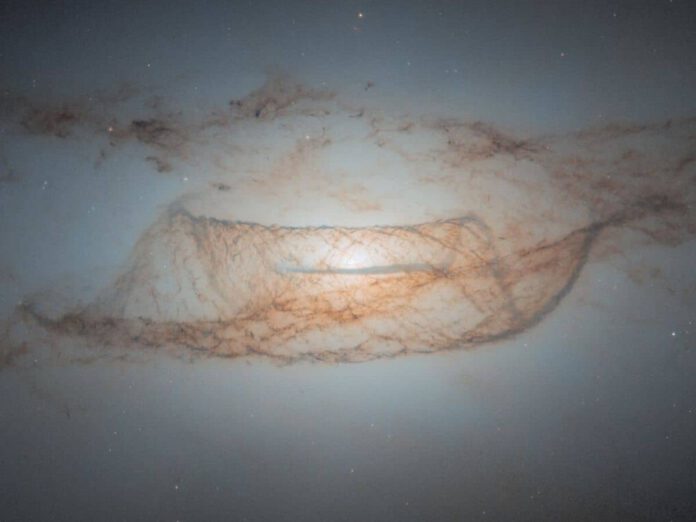
NASA Releases Stunning Image of Lenticular Galaxy Surrounded by Dark Matter Halo
NASA has unveiled a remarkable image of a lenticular galaxy that is encircled by a halo of dark matter.
The lenticular galaxy, named NGC 4753, is located sixty million light-years away from Earth and is a member of the Virgo II Cloud: a group consisting of at least a hundred galaxies and galaxy clusters. From our vantage point on Earth, we observe NGC 4753 from the side. This galaxy features a central bar—much like our Milky Way—but lacks spiral arms. Astronomers believe lenticular galaxies are either ancient spiral galaxies whose spiral arms have faded away or are formed through collisions of spiral galaxies.
Dark Matter
Though it is believed that NGC 4753 is primarily composed of dark matter, we cannot see this dark matter in the latest Hubble image. Dark matter does not reflect light, making it invisible. Scientists know dark matter exists by observing its indirect effects on stars and galaxies. The movements of these celestial bodies can only be explained by the laws of relativity and gravity if dark matter is present. However, the exact nature of dark matter remains one of the greatest mysteries in modern science.
Complex Dust Structures
In the image, complex dust structures within the galaxy are visible. These dust lanes have been influenced by a collision with a dwarf galaxy. Scientists estimate this collision took place about 1.3 billion years ago. The dwarf galaxy has since merged entirely with NGC 4753.
Scientists find NGC 4753 an intriguing target for study. The lenticular galaxy possesses a complex structure and low density. Additionally, two Type Ia supernovae have already been spotted within this galaxy. A Type Ia supernova occurs in a binary star system, where at least one of the stars is a white dwarf. The white dwarf draws matter from the other star. Should the white dwarf’s mass exceed 1.44 solar masses—known as the Chandrasekhar limit—nuclear fusion restarts, causing the object to explode in a supernova. Such a supernova explosion is five billion times brighter than the sun. Because the brightness is always consistent, astronomers use these supernovae to measure distances in the universe.











